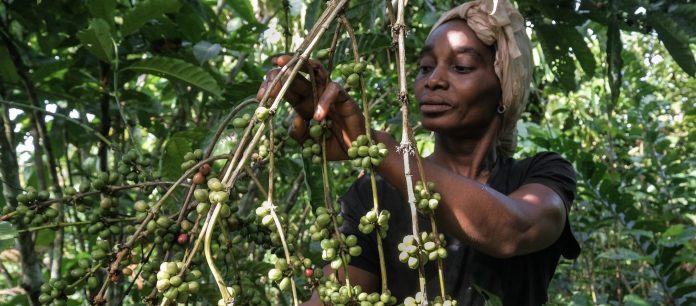Agroforestry is revolutionizing farming across Africa and beyond. By integrating trees, shrubs, crops, and livestock on the same piece of land, farmers can unlock multiple economic benefits while maintaining sustainable farming practices. This innovative system boosts farm productivity, diversifies income, reduces risks, and enhances long-term soil health. Agroforestry not only secures a farmer’s livelihood but also contributes to environmental conservation.
This article explores the economic benefits of agroforestry for farmers, showing how this approach can turn small farms into thriving enterprises and support farmers’ financial growth.
Agroforestry Income Opportunities
One of the most significant benefits of agroforestry is the variety of income streams it creates. Farmers no longer need to rely solely on a single crop or livestock for their earnings. Agroforestry allows them to benefit from multiple products on the same land, such as:
- Timber: Trees grown in agroforestry systems are a long-term investment that increases in value over time. Timber can be harvested and sold for a substantial profit when mature.
- Fruits and Nuts: Seasonal crops like mangoes, cashews, or almonds provide steady income during harvest periods.
- Medicinal Plants: Shrubs like neem or moringa are highly valued for their natural medicinal properties and fetch high prices in local and international markets.
- Livestock Products: Livestock raised under agroforestry systems benefit from shade and nutritious forage, leading to healthier animals that produce higher-quality meat and milk.
Diversifying income reduces a farmer’s dependency on one source, protecting them from risks such as market price drops, pest outbreaks, or poor weather.
Agroforestry and Sustainable Farming
Agroforestry creates more sustainable farms by enhancing soil fertility and boosting resilience. For instance:
- Nitrogen-Fixing Trees: Certain tree species, like acacia and leucaena, naturally enrich the soil by fixing nitrogen, reducing farmers’ reliance on expensive chemical fertilizers.
- Shaded Microclimates: Trees help moderate farm temperatures, protecting crops from excessive heat and retaining soil moisture, which is crucial during dry seasons.
This blend of natural processes leads to bigger harvests, healthier plants, and increased profits for farmers.
Profitability in Agroforestry
Agroforestry also helps farmers cut costs, making their operations more profitable:
- Natural Fertilizers: Trees shed leaves that decompose into organic matter, enriching the soil naturally.
- Pest Control: Trees attract beneficial birds and insects that prey on harmful pests, reducing the need for expensive pesticides.
- Erosion Prevention: Tree roots bind the soil, preventing erosion and maintaining land productivity for years to come.
Farmers save money while boosting their income, creating a win-win situation.
Read Also: No-till (Conservation) farming vs Conventional Tillage Agriculture
Trees as Savings Accounts for Farmers
For farmers, timber trees act as a long-term savings account. Over time, these trees grow in size and value, serving as an asset that can be harvested and sold when needed. Many farmers use their timber earnings for:
- Emergency expenses like medical bills.
- Paying school fees for their children.
- Expanding or upgrading their farms.
Agroforestry allows farmers to balance short-term income with long-term financial security.
New Markets to Explore with Agroforestry
Agroforestry products open doors to high-paying, niche markets. Farmers who adopt sustainable practices can tap into:
- Organic Product Markets: Certification as organic or sustainably grown can command higher prices for agroforestry products.
- Carbon Credits: Governments and organizations are increasingly paying farmers for capturing carbon through tree planting, offering an additional income stream.
- Agro-Tourism: Beautiful, biodiverse farms attract visitors who are willing to pay for farm tours, eco-friendly lodging, or fresh produce.
These markets enhance the profitability of agroforestry, giving farmers access to buyers willing to pay a premium for sustainable products.
Safer Farming with Reduced Risks
Unlike traditional monoculture farming, agroforestry reduces the risks associated with farming. By growing multiple crops alongside trees and raising livestock, farmers are less vulnerable to:
- Crop failures are caused by pests or diseases.
- Price fluctuations in the market for a single product.
- Harsh weather conditions like floods or droughts.
For example, shade trees protect delicate crops like cocoa from strong winds and excessive heat, ensuring better yields even in challenging conditions.
Job Creation in Agroforestry
Agroforestry also creates opportunities for employment. The process of planting, maintaining, and harvesting trees, crops, and livestock requires additional labour, which can be hired locally. This boosts household incomes, supports rural economies, and strengthens communities.
Agroforestry farms often serve as hubs of innovation, attracting experts and partnerships that lead to even more job opportunities.
Conclusion: Agroforestry for Smallholder Farmers
Agroforestry is not just a farming method but a pathway to wealth creation and sustainability. Offering farmers diversified income sources, improving soil health, and reducing financial risks, makes farms more resilient and profitable. For smallholder farmers looking to build a secure and prosperous future, agroforestry provides the tools to succeed.
Investing in agroforestry is a smart move for farmers who want to increase their income, adapt to climate challenges, and ensure long-term success. Are you ready to transform your farm with agroforestry? Let us know your thoughts in the comments below!
If you want to know more about how you can practice agroforestry to maximize farm revenues, look out for our next article or Practical Guide to Profitable Agroforestry.


